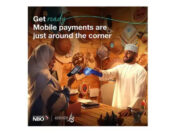Ecommerce in the region is growing, promising the rise of an industry that has changed business dynamics in markets such as China and India. There are some trends and innovations in ecommerce and the attribution strategies that are transforming the sector globally and locally. Criteo took a closer look at this from a Middle East and North Africa (MENA) perspective.

Gregory Gazagne, Executive Vice President, Criteo EMEA points out the importance of people-centric marketing in the new world. He said “Today’s consumer is driving a seismic shift in ecommerce. Millennials have grown up with digital and Gen Z are ‘technoholics’, they expect everything on demand and thus smartphones are increasingly becoming the device of choice for ecommerce.”
In 2016, approximately 1 billion active mobile payment users exist globally. By 2019, the number is predicted to reach 2 billion. Mobile is driving an unprecedented shift in consumer behavior and has reduced the use of cards and cash.
Mobile First
“A mobile first approach is key for any ecommerce business or retailer to succeed in this day and age. Globally, smartphones are leading the way and the MENA region is a 81 percent smartphone driven region with 43 percent ecommerce transactions happening through mobile, in comparison to 39 percent globally,” added Dirk Henke, Criteo’s Managing Director for Emerging Markets.

“By optimizing the mobile experience for smartphones and personalizing mobile web shopping experience, brands will have a greater chance to convert browsers to buyers,” Mr Henke added.
According to Criteo’s Mobile Commerce Report H1 2016, 57 percent of retail mobile transactions are made within an app. By making applications a priority, building loyalty and rewards to inspire brand engagement, and providing personalized communications across all platforms, retailers can harness the power of apps for their business and generate over 60 percent revenues in app.
The Contextual Advantage
The conversion rate for mobile app purchases is 13 percent as opposed to the desktop conversion rate, which is 11 percent. Technologies like deep linking and mobile retargeting help retailers drive downloads and traffic to apps.
By implementing technology, retailers can connect with people as opposed to devices by using real-time customer and device data to create a seamless experience and a consistent brand story. Cross device purchasing is 50 percent of all ecommerce globally and 42 percent in Middle East and Africa.
By 2026, contextual location will be an integral part of the retail experience and will be driven by mobile. Predictive analysis will pave the way for a far better shopping experience and digital assistants will draw on cognitive power of artificial intelligence and will do the job of identifying goods and deals for users.
The two Criteo leaders made these comments at the annual flagship event, Criteo Live, that took place for the first time ever in the UAE in Dubai on November 9, 2016.





